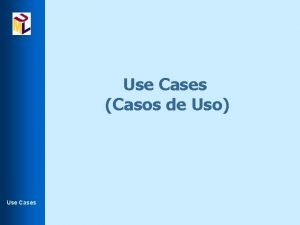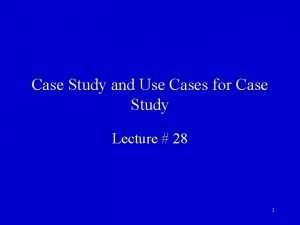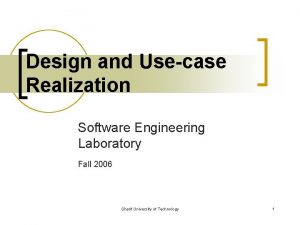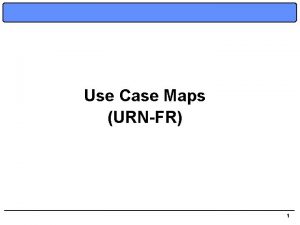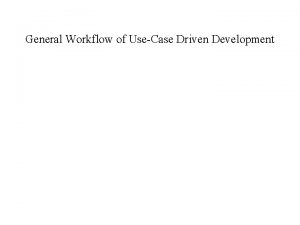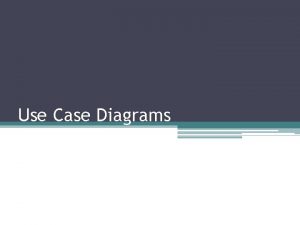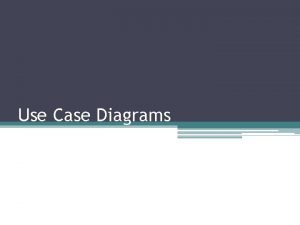Use Case Maps URNFR 1 UseCase Maps Usecase








- Slides: 8

Use Case Maps (URN-FR) 1

Use-Case Maps “Use-case maps trace the global dynamic flow of causality through the components of the system, that result from each use case. ” (Buhr and Casselman, 1996) User System 2

Bank Machine UCM Card invalid Bank Machine card reader x x central controller x user interface x Incorrect PIN CBS x x Transaction Rejected printer x 3

A UCM Path Segment responsibilities r 1 r 3 r 2 start point path segment end bar Formally a start point is defined by a pre-condition (if any) and a set of possible triggering events. 4

An Example ucm 1 te 1 C 1 r 3 C 3 r 4 r 1 te 1: triggering event for path P 1 (precondition(te 1): System is in the state S 1) re 1: resulting event for path P 1 (postcondition(re 1): System is in the state S 2) re 1 C 2 r 2 5

Superimposition of Scenarios There can be several concurrent terminating paths in a UCM. B E A C D F H G J I Each use case is to have a semantically equivalent UCM. 6

Showing Structure A UCM proceeds from a use-case and abstracts away from specific messages between objects, focusing instead on responsibilities. 7

The Bottom Line • UCMs are typically useful for obtaining and/or verifying the responsibilities of objects: – expressing use-cases as paths of responsibilities helps tremendously in enforcing traceability between requirements and the more detailed sequence diagrams: » UC -> UCMs -> MSCs – knowing which responsibilities of an object participate in which scenarios helps with concurrency analysis, scheduling, and regression testing. – a UCM documents the relationships between different path segments. So inter-scenario relationships should be captured in the UCM associated with each use case. – the information of the use case diagram must not be forgotten! It gives the overall map for inter-UC processing. • A public domain tool exists for UCM drawing: – www. usecasemaps. org 8
